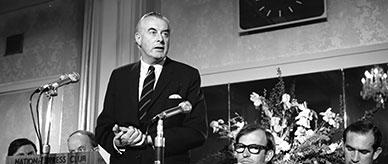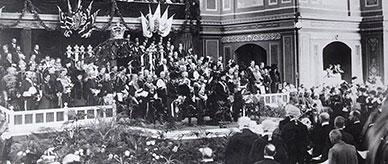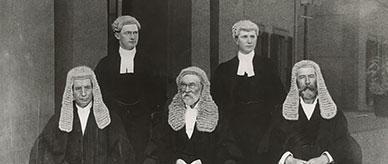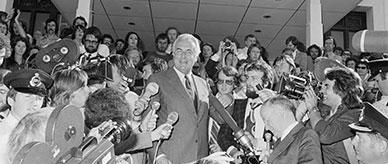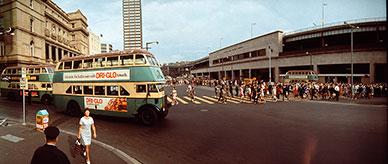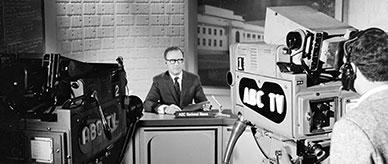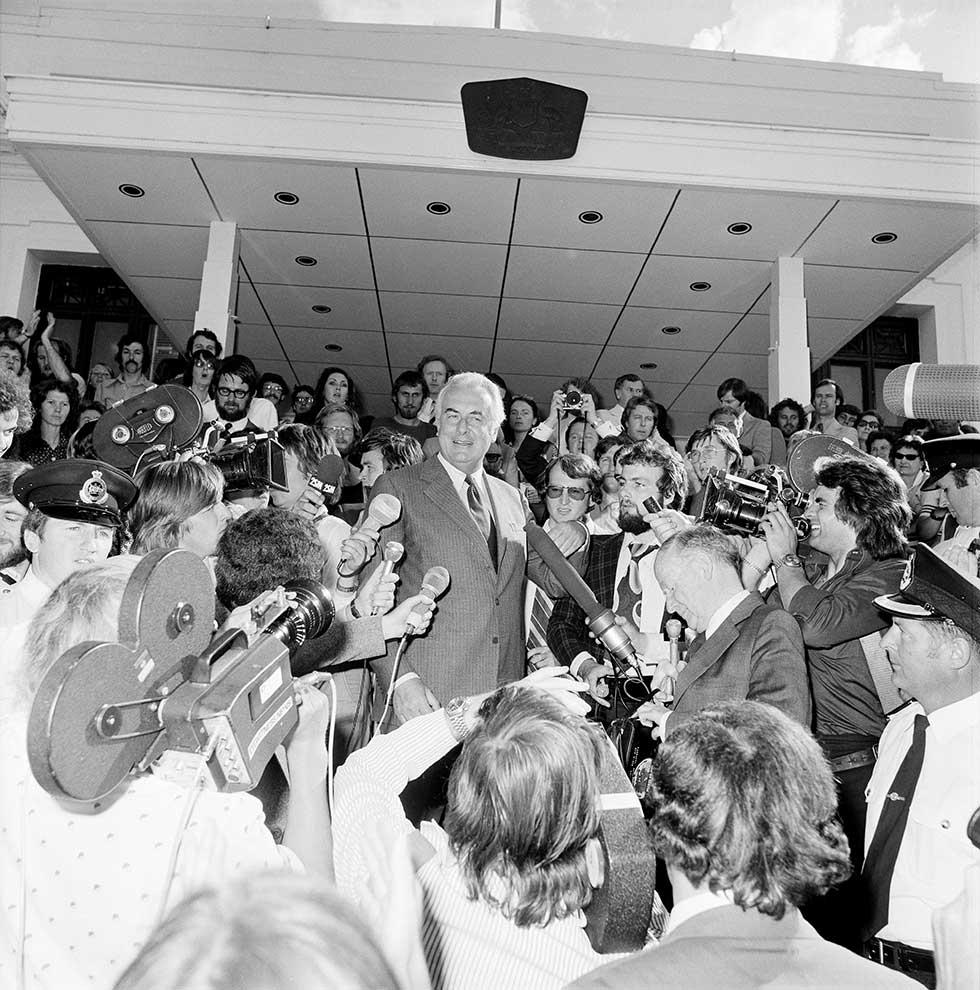


About this record
This is a black-and-white photograph that shows Prime Minister Gough Whitlam speaking on the steps of Parliament House (now Old Parliament House) on 11 November 1975 after Governor-General Sir John Kerr had revoked Whitlam's commission to form a government – an event that has become known as 'the dismissal'. Journalists and cameramen surround Mr Whitlam, while a number of Labor staffers and supporters stand behind him at the top of the steps.
Educational value
- Shows Gough Whitlam making his way down the steps of Parliament House to speak to the media and supporters following his dismissal – the Governor-General had taken the unprecedented step of dismissing a prime minister who held the majority in the House of Representatives; the Governor-General's aim was to break a constitutional impasse brought about by the refusal of the Senate, then controlled by the Liberal–Country Party (the Country Party has since been renamed The Nationals), to pass supply (money or appropriation bills).
- Shows Whitlam in the moments before the Governor-General's official secretary David Smith read a proclamation dissolving parliament – after dismissing Whitlam, Kerr appointed Liberal leader Malcolm Fraser as caretaker Prime Minister on the understanding that he immediately pass supply and call a general election.
- Is a record of the occasion on which Whitlam made his famous speech 'Well may we say God save the Queen, because nothing will save the Governor-General' – Whitlam referred to Fraser as 'Kerr's cur' and urged supporters to 'maintain your rage and enthusiasm'.
- Demonstrates the intense media interest in the constitutional crisis – the crisis had continued for nearly four weeks and threatened to paralyse government; the dismissal and the events leading up to it remain the most dramatic and controversial news story in Australian political history.
- Shows some of the crowd of up to 4000 people who gathered outside the entrance to Parliament House to show their support for Whitlam as news of Kerr's actions leaked out – as Whitlam made his way down the steps, the crowd chanted 'We want Gough'; spontaneous and rowdy demonstrations also took place in Sydney, Brisbane and Melbourne, while seamen and waterside and metal workers were among those who immediately walked off the job in protest.
- Shows Gough Whitlam at the most dramatic moment of his political career – Whitlam (born in 1916) was elected the federal member for Werriwa, New South Wales, in 1952; he was Prime Minister from December 1972 until 11 November 1975, leading the Labor Party to a historic win after 23 years in opposition with an ambitious reform program; he remained as Opposition Leader until 1977 when he resigned after another election defeat; he left parliament in 1978.
- Indicates that security provided for a prime minister or opposition leader in this period was more relaxed than today – Whitlam is shown amid the crowd and does not appear to have any personal security guards, while three Australian Federal Police officers are positioned within the crowds.
- Suggests that most political correspondents in this period were men – all the reporters who surround Whitlam in the photograph are male; Canberra Times journalist Gay Davidson was the only woman in the federal parliamentary press gallery in 1975.
Acknowledgments
Learning resource text © Education Services Australia Limited and the National Archives of Australia 2010.
Related themes
Need help with your research?
Learn how to interpret primary sources, use our collection and more.

